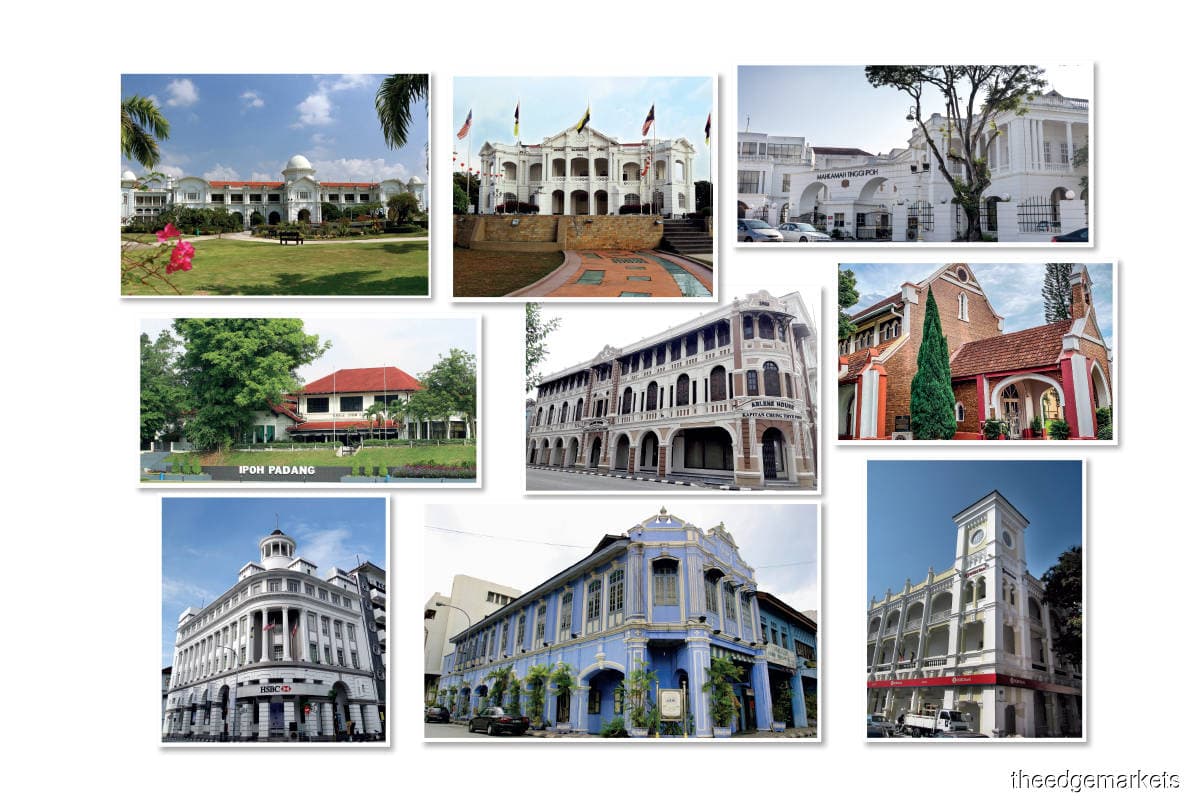
This article first appeared in City & Country, The Edge Malaysia Weekly on January 9, 2023 - January 15, 2023
Ipoh, a former tin mining town in Perak, has gained recognition as a popular tourist destination with its colonial centre, traditional shophouses and delicious food. Here, we take a look at the Ipoh Old Town Heritage Trail, an interesting walk that passes several historical sites.
Ipoh Railway Station
Designed by the late English architect and soldier Arthur Benison Hubback, the Ipoh Railway Station was built between 1914 and 1917 and was the second concrete station to be constructed in Ipoh. Completion of the station was delayed for three years due to a lack of construction materials and high costs during World War I.
The station closely resembles its Kuala Lumpur counterpart and is affectionately known to locals as the Taj Mahal of lpoh. The overall layout of the station has remained largely unchanged after more than 100 years of operation by the Federated Malay States Railways and Keretapi Tanah Melayu Bhd.
It is an impressive landmark that combines Moorish architecture with modern embellishments, and is surrounded by a beautiful garden that serves as a charming welcome for tourists, according to tourismperakmalaysia.com.
Ipoh High Court
Constructed between 1926 and 1928, the Ipoh High Court, said to be the third courthouse complex in Ipoh, was constructed to replace older courthouses in service from 1888 to 1909. It was opened by Perak British resident R W Thompson on July 14, 1928.
Located diagonally across from the Ipoh Town Hall in Jalan Maharajalela, it is believed that there was an underground passage connecting both buildings. During the Japanese occupation, it was also used as a high court by the Japanese. Visitors are not allowed to enter the High Court unless they are lawyers, police officers or judicial staff, according to ipohheritage.mbi.gov.my.
Royal Ipoh Club
Established by a group of Ipoh-based
Europeans in 1895, the Royal Ipoh Club was used by the Imperial Japanese Army as a laundry house for the officers living at the nearby St Michael’s Institution during the Japanese occupation.
According to royalipohclub.org.my, the black-and-white clubhouse is one of the old landmarks overlooking the Ipoh Padang (field) and has been declared one of the heritage buildings in Ipoh.
During the early days, the ruling British limited club membership to whites. Malaysians were gradually admitted as members after the country attained independence in 1957.
Now the club, which has the Sultan of Perak, Sultan Nazrin Shah, as its royal patron, remains private, with access for members and their guests only. It also provides seven 3-star rooms that are available to travellers, according to tourismperakmalaysia.com.
Chung Thye Phin Building
The Chung Thye Phin Building, also known as Arlene House, was built in 1905 by Kapitan Chung Thye Phin. He was a prominent tin miner, rubber planter, general-revenue farm owner and the last Kapitan Cina of Malaya. The building, located in Jalan Dato Maharajalela, was used as the headquarters of his vast business empire during the tin era of Malaya.
According to arlenehouseipoh.business.site, the building was later occupied by Dr R M Connelly’s Medical Hall, followed by Oldfield Dispensaries Ltd and George Town Dispensary Ltd. This heritage building of neoclassical Victorian-Palladian design underwent eight years of conservation and restoration work, from 2012 to 2020, to return it to its former glory.
A history, culture and art gallery mu-
seum called Made In Ipoh was established as part of the building’s adaptive reuse to showcase the stories, life and legacy of the last Kapitan Cina of Malaya with a collection of exhibitions. It can be rented for photography and videography works, events and exhibition activities.
Straits Trading Building (OCBC)
Featuring Italian Renaissance architecture with a corner tower, the Straits Trading Company, a major tin ore exporter, erected this three-storey building in Jalan Dato Maharajalela in 1907.
The Straits Trading Company was founded by the late Singaporean tin-smelter Herman Muhlinghaus in 1889. The company procured the mineral from tin miners in the Kinta Valley, and at its peak handled half of all sales of tin produced in Perak. The wealth generated from the mining industry allowed the Straits Trading Company to construct a building in the Ipoh Old Town area. Now, the stately building has maintained its beautiful structure and houses the main branch of OCBC Bank in Ipoh, according to ipohpedia.com.
Save by subscribing to us for your print and/or digital copy.
P/S: The Edge is also available on Apple's AppStore and Androids' Google Play.








